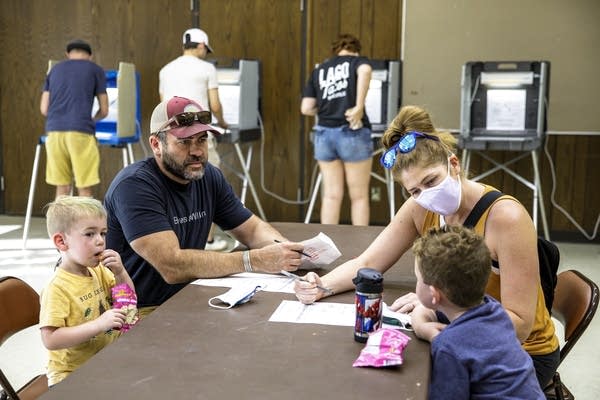You asked: How do I learn about attorney, judge and school board races?

Justine and Chris explain to their children Rowan (left) and Harrison about voting at Lynnhurst Community Center during the Minnesota primary elections in Minneapolis on Aug. 9.
Kerem Yücel | MPR News
Go Deeper.
Create an account or log in to save stories.
Like this?
Thanks for liking this story! We have added it to a list of your favorite stories.


